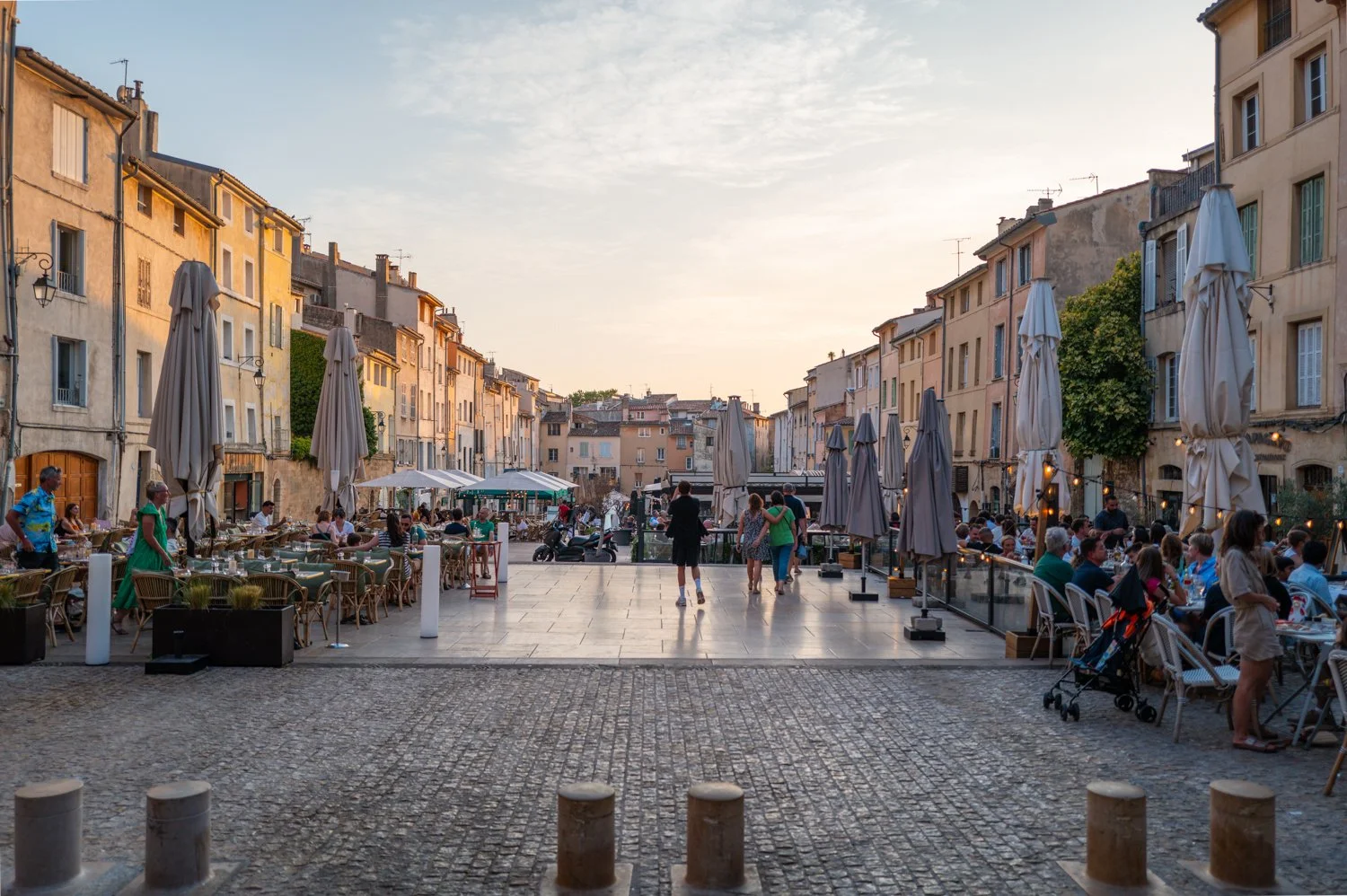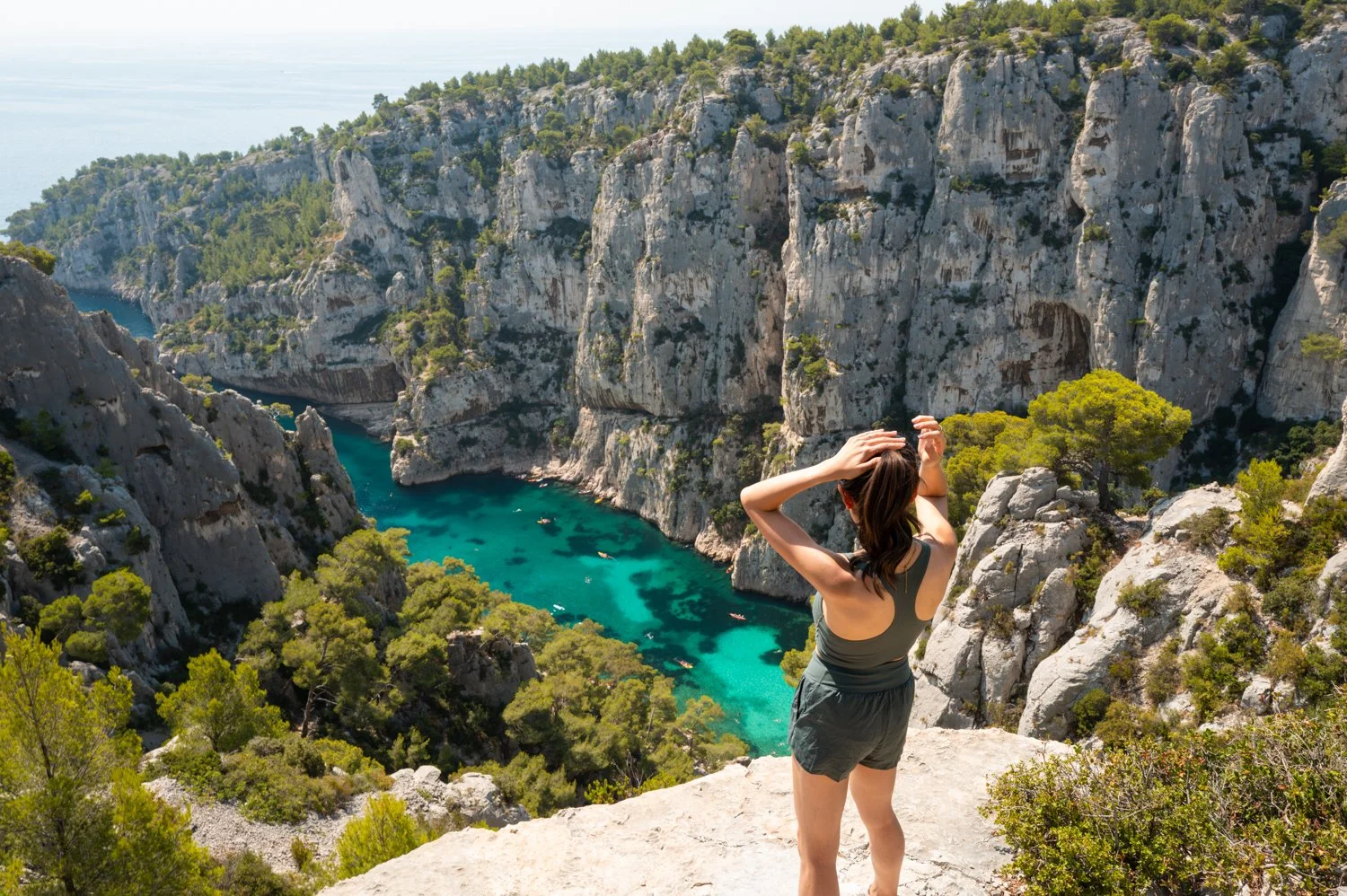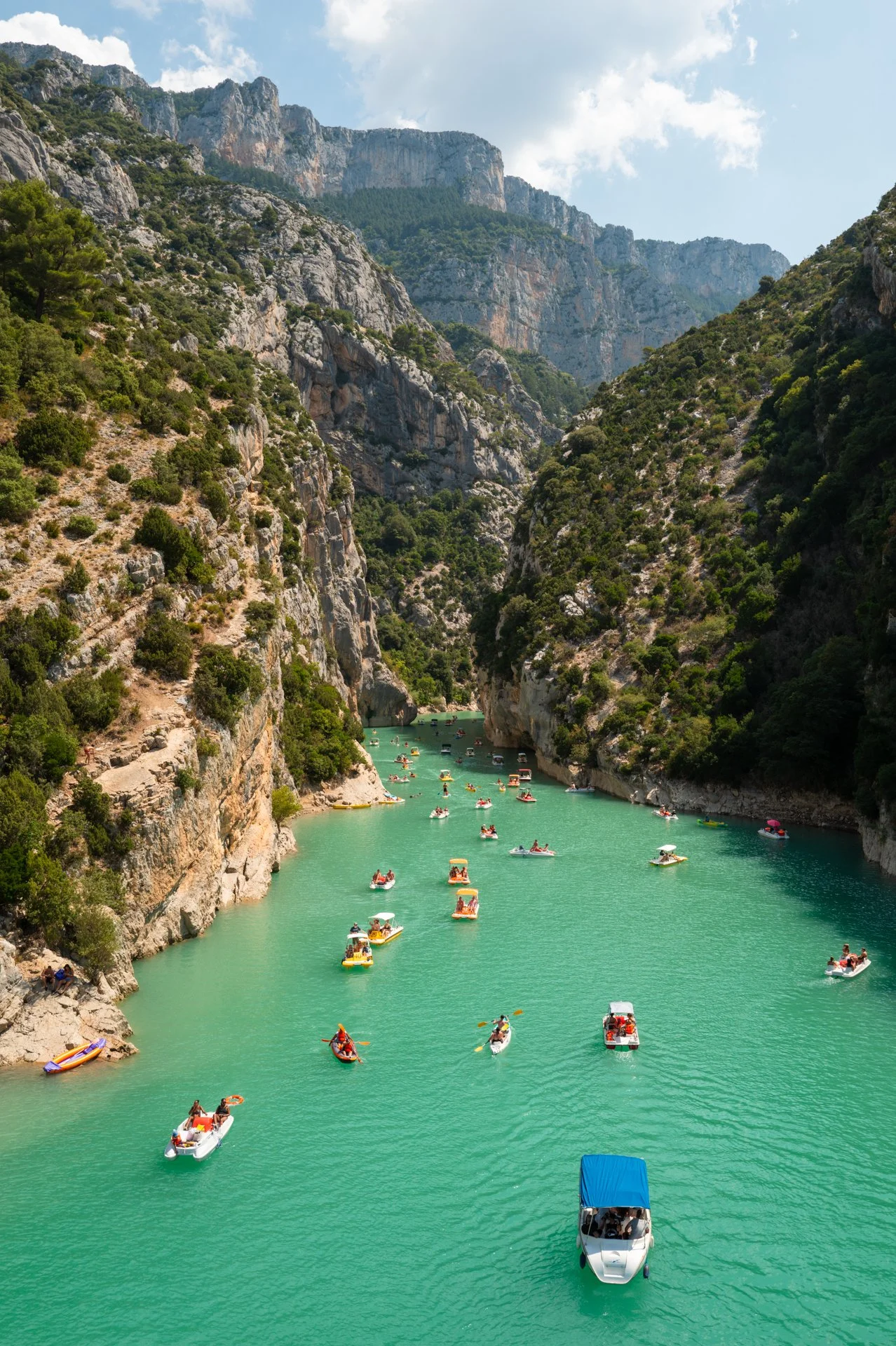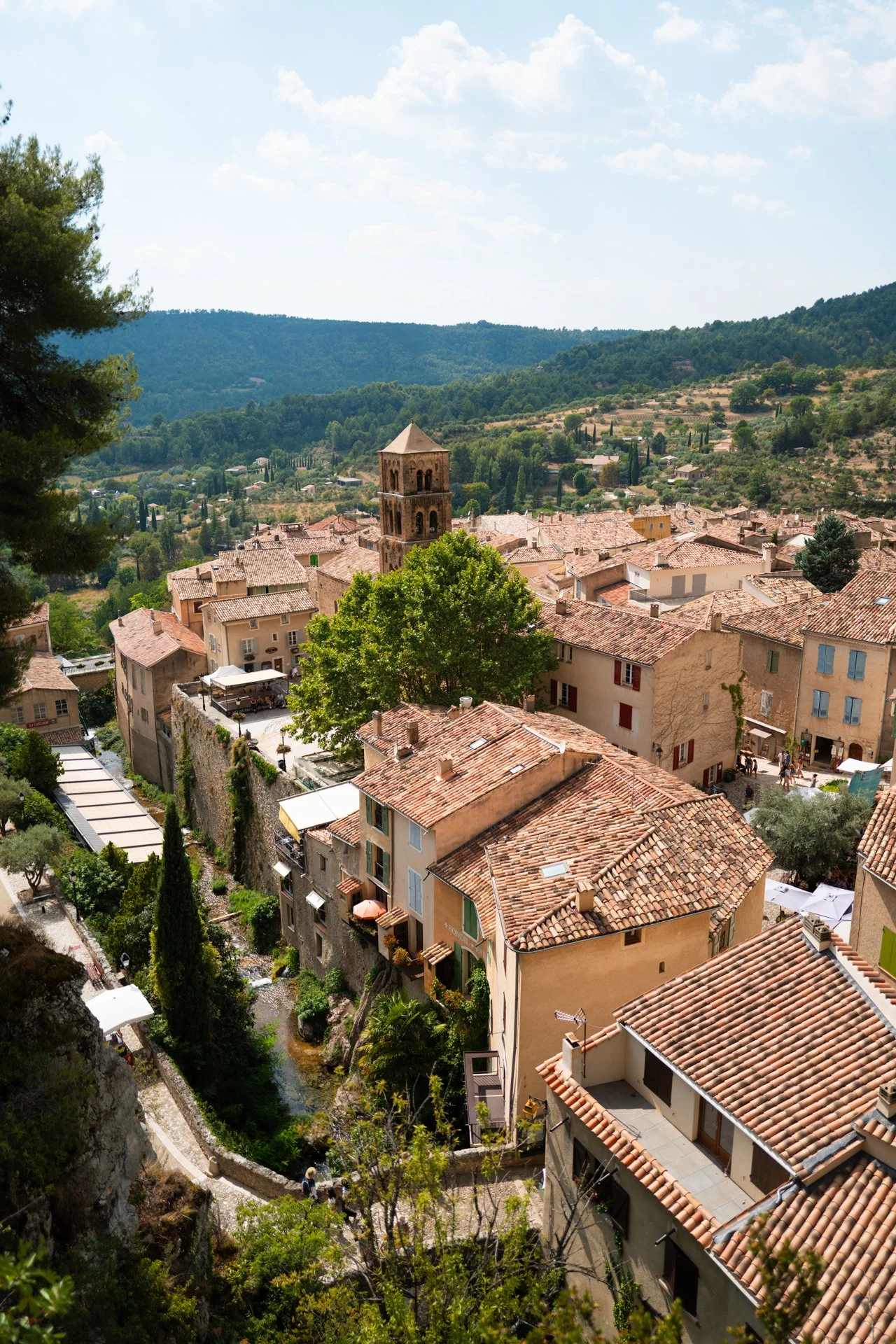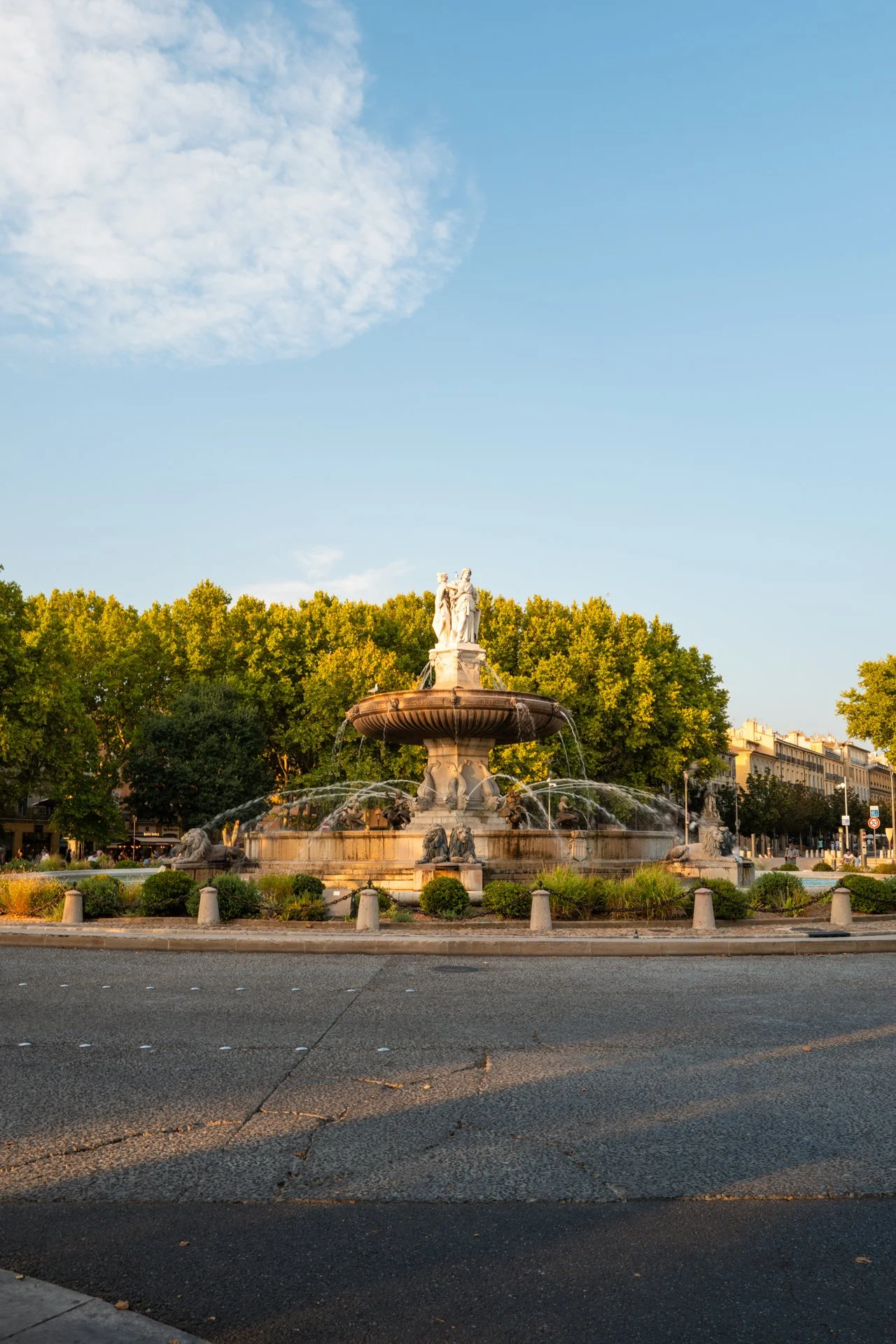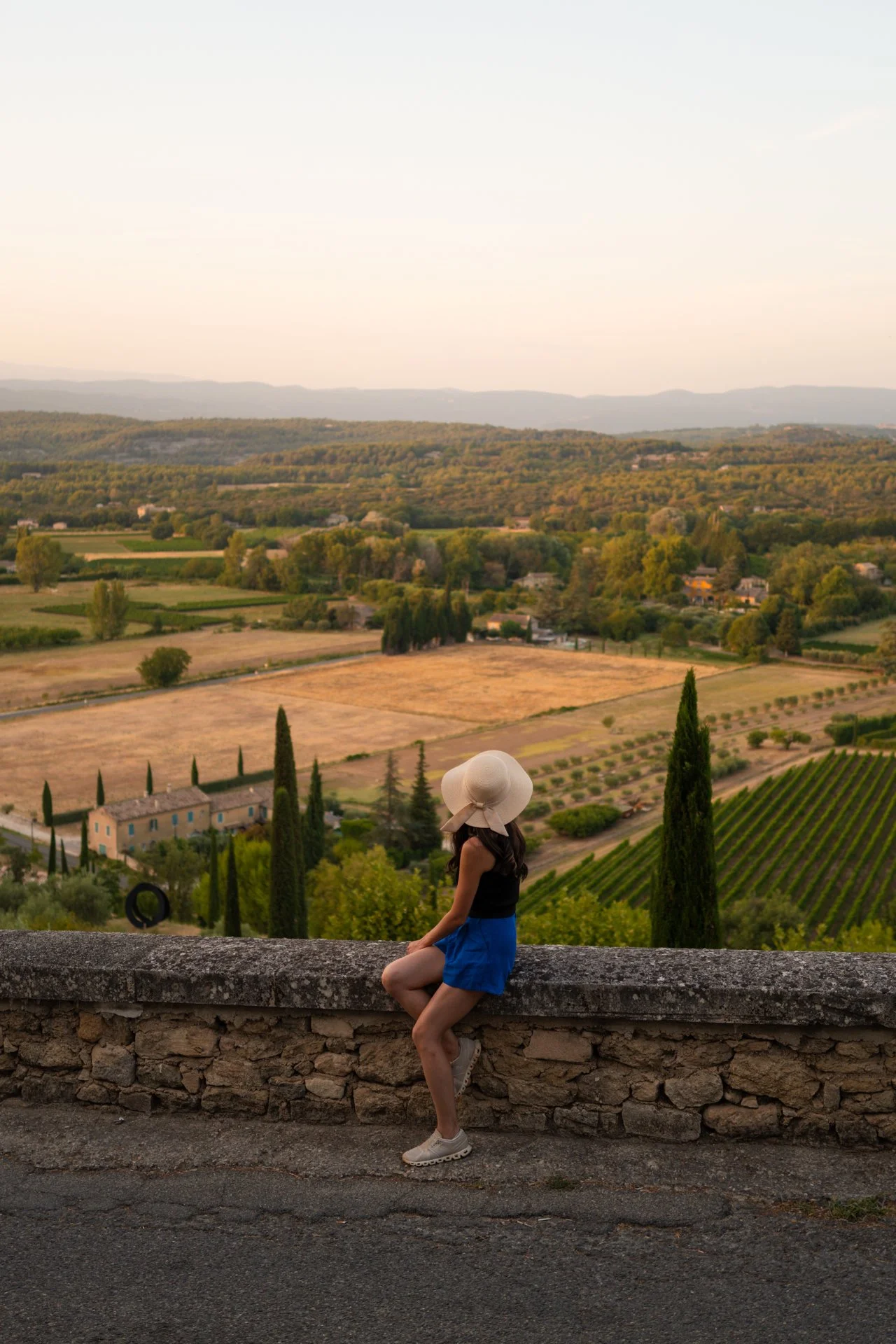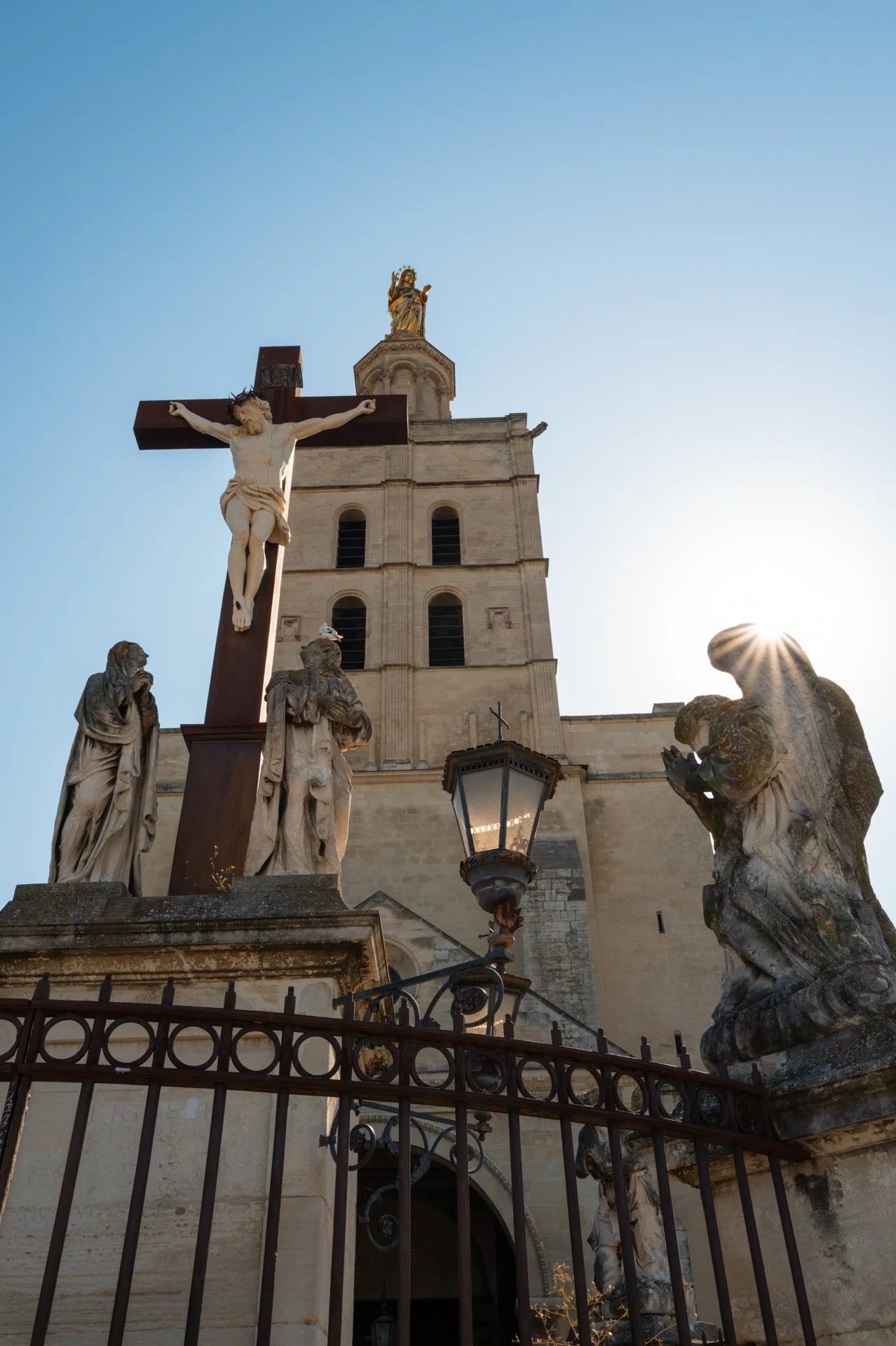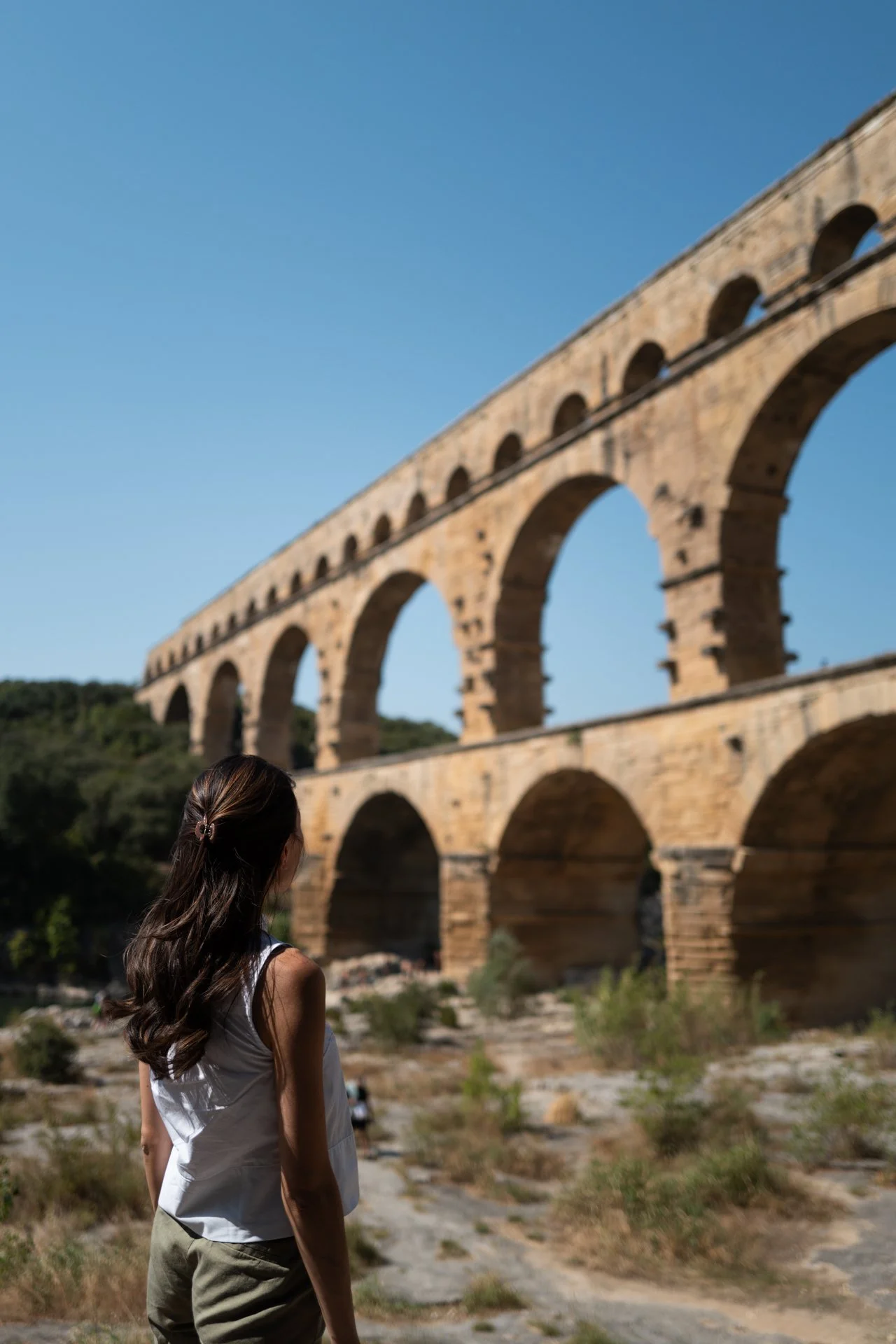7-Day Itinerary // Provence, France
Provence is one of my favorite regions on earth. Covering a vast area of over 31,000 km² in southeastern France, with mountain ranges blending into lavender fields and olive groves, where bustling market towns coexist with ancient Roman history.
We just spent hundreds of hours of research and 2 weeks exploring every corner of this region, and in this comprehensive 7-day itinerary, I'll share my insights and recommendations to help you make the most of your visit.
If you have more than a week, I personally think you can spend much more time here, or you can spend a week in the French Riviera (guide for that coming soon).
7-Day Provence Itinerary Overview
Day 1: Aix-en-Provence
Day 2: Calanques (Port-Miou, Port-Pin, En-Vau), Cassis harbor & beach, Cap Canaille
Day 3: Verdon Gorge, Moustiers-Sainte-Marie, Valensole Plateau (lavender fields)
Day 4:
Option 1: Lourmarin, Ansouis, Lacoste, Bonnieux (Luberon)
Option 2: Arles
Day 5: Abbaye de Sénanque, Gordes, Roussillon, the Ochre Trail, Menerbes (Luberon)
Day 6: Saint-Rémy-de-Provence, Les Baux-de-Provence, Carrières de Lumières, Chateau des Alpilles
Day 7: L’Isle-sur-la-Sorgue Market, Fontaine-de-Vaucluse, Châteauneuf-du-Pape, Avignon, Pont du Gard
Provence is one of those places where you have to plan your itinerary around the day of the week because the Provencal market date in each town varies. If you’re not really into markets, I would still recommend you see one because it’s such a way of life in this region, but then after, you can potentially change the day order of the itinerary. So read this itinerary as Day 1 = Monday … Day 7 = Sunday. Another note: many shops are closed on Monday (because they’re open Sunday), so if you find yourself in a bit of a ghost town, it’s probably a Monday.
Provence is also a region you definitely want a rental car for. I think there are buses that connect various towns, but you don’t want to be waiting for those schedules, especially because a lot of these towns don’t take that much time to explore, so you might spend more time in transit than exploring the town. This itinerary definitely assumes you have a car. Pick one up in Marseille when you land. I would definitely recommend a smaller car (the roads can be very narrow).
Where to Base Yourself
I personally prefer to move bases as little as possible, so I would recommend two bases your week — one further east (Aix-en-Provence), and one further west (Gordes or L’Isle-sur-la-Sorgue).
This was the Rooftop Apartment we stayed at in Aix-en-Provence, and we loved the views. It is also located over a grocery story, which is super convenient.
Day 1: (Monday) Aix-en-Provence
Morning: Cours Mirabeau
After a travel day, spend a relaxed day in Aix-en-Provence. Begin your morning with a leisurely stroll along the Cours Mirabeau, a grand boulevard shaded by plane trees and dotted with old stone fountains. Grab coffee somewhere along this boulevard and people watch. During market days, these streets are lined with vendors.
If you like art, we really enjoyed our time in Musée Granet, which was having a very well done exhibit on Paul Cézanne who lived here for most of his life.
Afternoon: Château La Coste
One of the locals in Provence recommended we visit Château La Coste, a vineyard just outside Aix that combines fine wine with modern art and architecture. It reminded us a lot of Storm King just outside New York City. We did their wine tour and learned a lot (you can book it here). They are a very industrial winery, though, so don’t expect a very boutique experience.
If you go for a tasting, I recommend wandering the sculpture park after, before you check out the gift shop on the way out. You can also dine here for a nice terrace dining experience for lunch or dinner.
Evening: Dinner in Aix-en-Provence
For dinner, if you’re looking for a Michelin, upscale experience, try Restaurant LES CAVES HENRI IV (also known as Le Formal), which serves refined Provençal cuisine in a vaulted stone cellar. Or, if you want to drive ~10 min, we loved our dinner at Le Art. For something more relaxed in town, consider Le Ramus.
Day 2: Calanques (Port-Miou, Port-Pin, En-Vau), Cassis harbor & beach, Cap Canaille
Drive: ~1 hr each way from Aix-en-Provence
Note: Ideally this day would actually be done on Monday because Cassis is a larger town with more stores open on Monday, and the Calanques can also be visited any day of the week, but if you’re just arriving to your accommodation in Aix on Monday, I would not recommend you drive back toward Marseille for Cassis for this day. But if you are rearranging your itinerary, I would make this your Monday.
Morning: Parc National des Calanques
Start the day early and drive about an hour from Aix-en-Provence to Cassis. If you plan to hike the Calanque d’En-Vau trail (moderate, ~3 hrs round trip), I highly recommend you leave and arrive early. The parking lot at the trailhead gets full pretty early.
If you don’t have a car or don’t want to worry about parking, book this half-day tour of Cassis from Aix-en-Provence.
If you did the hike and head back to the parking lot, there’s a restaurant near there called La Plage Bleue that we quite enjoyed.
If you’d prefer not to hike, you can also do a boat tour or kayak the Calanques (Port-Miou, Port-Pin, En-Vau).
Afternoon: Explore Cassis
After exploring the water, explore the port, beach, and town. If you want to the end of the pier you get nice views back toward the port, or you can sunbathe on the beach like the locals.
In town, grab lunch. Chez Poulette is super well-rated, but closed Monday and Tuesday. O Rev Cassis is also very well-rated, and closed Wednesday, instead.
Evening: Dinner in Aix-en-Provence
On your way back to Aix, if you have time/energy, you can make a quick visit to Cap Canaille viewpoint, which looks back onto Cassis and its port.
Day 3: Verdon Gorge, Moustiers-Sainte-Marie, Valensole Plateau (lavender fields)
This itinerary has you doing it all yourself, but if you want a tour option, this group tour (up to 4) is a great option!
Morning: Gorges du Verdon (Verdon Gorge)
Leave home early to drive to one of Europe’s great natural wonders — the Gorges du Verdon, often called the “Grand Canyon of France.” The limestone cliffs plunge 700 meters into the turquoise ribbon of the Verdon River, a stunning view from every angle.
The easiest way to get there is to navigate to “Pont du Galetas,” and then pull into the parking lot on the south side of the lake.
Rent a kayak, pedalo, or paddleboard from the Pont du Galetas at Lac de Sainte-Croix. You’ll definitely want to get there early to rent one, though. We got there around noon and the lines for the rentals were very long.
After exploring, if you want more panoramic views, follow the Route de Castellane (D952) to Point de vue - Lac de Ste-Croix. If you want to continue to drive, the Verdon River runs quite long and you can view it from lookouts like Balcon de la Mescla and Point Sublime (40 min from Moustiers-Sainte-Marie).
Afternoon: Moustiers-Sainte-Marie
After you explore the gorge, double back toward Moustiers-Sainte-Marie, one of the most beautiful villages in France. Nestled at the base of dramatic limestone cliffs, Moustiers feels like it was carved from the rock itself. If you look up, you’ll see a golden star hanging between two cliffs on a chain — legend says it was placed there by a knight returning from the Crusades as a sign of gratitude.
Don’t miss the delicate faïence ceramics that have made Moustiers famous since the 17th century — the local workshops still produce hand-painted pieces using traditional glazes. If you want some really nice views of the town, hike up to Notre Dame de Beauvoir. It’s a climb, but worth it for the views.
Evening: Valensole Plateau
I highly recommend visiting Provence between late June and mid-July to catch views of the lavender everywhere. We visited Provence in August, and really regretted not coming earlier — everywhere we went we just felt like it would have been so much prettier with lavender in full bloom.
On your drive back to Aix, catch the Valensole Plateau bathed in golden sunset light. You can hop out to take photos, just please be careful of the lavender. This is people’s livelihood, after all. If you want to learn more or buy lavender straight from the source, stop at a small roadside farm (like Lavandes Angelvin or Les Grandes Marges) where you can chat with local growers, watch the distillation process, and pick up a small bottle of essential oil as a souvenir. They close around 5-6pm, though, so you’ll have to come back from the Gorge earlier.
Valensole in August. Definitely go in June or July
The Valensole plateau is also home to fields of sunflowers and wheat, which are beautiful if you catch them in season!
Day 4: Option 1: Lourmarin, Ansouis, Lacoste, Bonnieux (Luberon) or Option 2: Arles
Today, move your base to Gordes or L’Isle-sur-la-Sorgue. The main towns to visit in the Luberon are all on Day 5, so today you can choose to either spend more time in the Luberon visiting some of the smaller, more quaint villages, or see Roman ruins in Arles.
Option 1:
Morning: Aix-en-Provence and Lourmarin
Wake early and stroll into Aix’s Old Town as the market begins to unfold. Enjoy the stalls filling the squares with pyramids of peaches, baskets of olives, stacks of fragrant soaps. The Aix-en-Provence market (held most days, but especially vibrant on Tuesdays, Thursdays, and Saturdays) is one of the best markets in Provence.
I don’t really think you need a tour (it’s pretty straight forward), but this Provençal Farmer’s market tour will have a great guide take you around.
From there, drive north toward the Luberon Valley. The drive itself is spectacular — vineyards, olive groves, and the scent of thyme filling the air. Stop in Ansouis, a small, stone-built village with Château d’Ansouis perched at the top if you want to visit one of the smaller towns. It will only add about 10 min to your route. Then drive on to Lourmarin. If it’s Friday, you’re in luck: Lourmarin’s weekly market is one of the most beloved in Provence. The village streets come alive with stalls laden with lavender honey, handmade ceramics, and local cheeses.
Café Gaby is a popular people-watching spot. Grab lunch in the area before heading out for the afternoon.
Afternoon: Lacoste and Bonnieux
After lunch, continue to Lacoste, a hilltop gem with lots of art influence. Lacoste is home to Savannah College of Art and Design, and it hosts art exhibitions and summer concerts, thanks to fashion designer Pierre Cardin, who restored the château ruins.
By late afternoon, arrive in Bonnieux, a village that climbs the hillside in a graceful spiral of stone houses and cypress trees. Make your way up to the Vieille Église for sweeping views across the valley toward the vineyards of Lacoste and the distant Mont Ventoux.
Evening: Gordes
Continue toward Gordes, perhaps the most iconic village in Provence. As you approach, stop at the panoramic viewpoint just before entering — it’s one of the most photographed views in France.
We’ll be back tomorrow, but if you want to spend extra time here, enjoy the local art galleries and take in the sweeping views of the Luberon Valley below.
End your day with dinner at La Table de la Bastide, at Airelles Gordes, La Bastide. The hotel is one of the most iconic in the region, and the vibes for dinner (and/or drinks before) are immaculate. Don’t expect too much from the food, though — we thought it was just ok.
Option 2: Arles
Morning: Aix-en-Provence and Arles
Like Option 1, wake early and enjoy Aix’s Thursday market as it begins to unfold. It gets pretty crowded later in the morning, so the earlier you can go to enjoy it when it’s just locals, the better. Parking in downtown Aix-en-Provence can also get difficult closer to 11am or noon.
Once you’ve seen enough, make the 1 hour drive to Arles.
Afternoon: Arles
Once you get to Arles, have lunch in the Old Town, near the Place du Forum, once the heart of Roman Arles.
Then explore the Roman history of the town, starting at the Arènes d’Arles, the grand Roman amphitheatre built in the 1st century. Once home to gladiator battles, it now hosts events and performances you can attend. Climb to the top for panoramic views of the rooftops and the Rhône River.
If you like Van Gogh, you can follow the Van Gogh Trail, marked by plaques that show reproductions of his works in the exact locations where he painted them.
If you want a little more in this day, this tour takes you to Arles and Camargue, which looks absolutely stunning.
Evening: L’Isle-sur-la-Sorgue or Gordes
Depending on where you decided to make your base, grab dinner and enjoy the evening. If you’re based in Gordes or want to visit Airelles, I would recommend the dinner plans from Option 1 for this day (see above).
Day 5: Abbaye de Sénanque, Gordes, Roussillon, the Ochre Trail, Menerbes (Luberon)
Morning: Abbaye de Sénanque & Gordes
If you’re visiting in June or July, one of the most iconic scenes of lavender can be found at the Abbaye de Sénanque. Go early to try to beat the crowds if photos of lavender matter to you. Even if the lavender is not blooming you can tour the Abbey.
Then drive into Gordes. If you haven’t seen it in Day 4, don’t miss the panoramic viewpoint of the town from across the valley.
In the village itself, lose yourself in a maze of cobbled streets, or visit the Château de Gordes, which houses art exhibitions and offers views over the rooftops to the valley beyond. Stop for a late lunch at Le Mas Tourteron (make sure to call to make a reservation).
Afternoon: Roussillon & the Ochre Trail
After lunch, make the short drive over to Roussillon, one of the most colorful villages in France. The houses are washed in pastel shades of red, orange, and pink. Browse the small art galleries and shops selling natural pigments and handmade ceramics, and enjoy a gelato if it’s hot (or if it’s not!).
Then set out on the Sentier des Ocres (the Ochre Trail), a short loop through a beautiful landscape of rust-red cliffs, pine forests, and sculpted canyons. There is a short loop (30 min) and a slightly longer loop (~45 min), and I would definitely recommend doing the longer one. In the height of summer, make sure to bring water. There’s a water refill station right outside the park.
Evening: Ménerbes
From Roussillon, a scenic 20-minute drive brings you to Ménerbes, perched gracefully above the vineyards.
Wander and shop, and grab dinner at Maison de la Truffe et du Vin, where you can watch the sun set over the Luberon valley. This was one of our favorite sunset views in the Luberon.
Day 6: Saint-Rémy-de-Provence, Les Baux-de-Provence, Carrières de Lumières, Chateau des Alpilles
Morning: Saint-Rémy-de-Provence
Begin your morning in Saint-Rémy-de-Provence, one of my favorite towns in Provence. If you come on a Wednesday, you’ll catch the weekly market — one of the best in the region. Locals fill their baskets with herbs, cheese, and fresh garlic while visitors shop for woven baskets and jewelry. But even without the market the town is insanely cute and worth walking around in. Grab breakfast under lavender at La Maison Favier.
Just south of town, visit the Monastère Saint-Paul de Mausole, a psychiatric institution where Vincent van Gogh spent a year in recovery and created some of his most celebrated works, including The Starry Night. The tour of the hospital and its gardens is fascinating.
Afternoon: Les Baux-de-Provence
From Saint-Rémy, drive 15 minutes south into the rocky hills to reach Les Baux-de-Provence, a dramatic medieval village perched high on a limestone plateau. Climb up the narrow streets past stone houses, art galleries, and small cafés until you reach the Château des Baux, a vast open-air ruin with sweeping views over the Alpilles.
Just below the village, step into a former limestone quarry transformed into an immersive art experience — Carrières de Lumières. Here, massive rock walls serve as a canvas for digital projections of masterpieces — Monet, Van Gogh, Klimt, and others — set to music that fills the cavernous space. We thoroughly enjoyed the experience. Book tickets ahead of time to skip the line at the entrance.
Evening: Château des Alpilles
For dinner, enjoy a special experience at the Château des Alpilles, a 19th-century manor nestled among cypress trees and olive groves. A stay here is absolutely lovely, but a dinner also allows you to enjoy the property for an evening.
If you come for dinner, you’ll dine at the front of the hotel. Their lunch service is served by the pool in the back. I would definitely recommend a dinner over a lunch here.
Day 7: L’Isle-sur-la-Sorgue Market, Fontaine-de-Vaucluse, Châteauneuf-du-Pape, Avignon, Pont du Gard
Morning: Antique Market in L’Isle-sur-la-Sorgue
Start your day early in L’Isle-sur-la-Sorgue, often called the Venice of Provence for the canals that wind through its old town. Sundays here are legendary. While the town itself has many antique shops you can visit throughout the week, a Sunday outdoor market brings about 300 stalls to town.
Come early to enjoy the market before things get into full swing.
Afternoon: Fontaine-de-Vaucluse
Just ten minutes up the road, you’ll find Fontaine-de-Vaucluse, a village tucked beneath steep cliffs at the source of the emerald-green Sorgue River. A short riverside walk leads to the spring itself, one of the deepest in the world — a pool of impossibly clear water that seems to glow from within.
Parking here was was the most difficult of all the places we visited, but hopefully you’ll have better luck. You just might have to wait a bit for a spot.
Afternoon: Châteauneuf-du-Pape
If you like wine, after relaxing at Fontaine-de-Vaucluse, drive about an hour to Châteauneuf-du-Pape, the storied wine village that once supplied the popes of Avignon. Vineyards stretch in every direction, dotted with the region’s signature galets roulés — smooth stones that soak up the sun and give the wine its bold character.
Stop at one or two local domaines — Château Mont-Redon or Domaine de Beaurenard are excellent choices — for a tasting of the region’s full-bodied reds.
Late afternoon: Avignon
From the vineyards, it’s a short drive to Avignon, the grand medieval city that once served as the seat of the papacy. Visit inside the Palais des Papes, an immense Gothic fortress, and enjoy the art on display.
Afterward, stroll to the Pont d’Avignon — officially the Pont Saint-Bénézet — the half-bridge that famously “goes nowhere.”
After, if you still have time/energy, drive to your final stop, Pont du Gard, about 30 min west of Avignon.
Evening: Pont du Gard
The Roman aqueduct, built nearly two thousand years ago, is a UNESCO World Heritage Site. It was part of a 50-kilometer aqueduct system that carried fresh water from the springs of Uzès to the Roman city of Nemausus (modern-day Nîmes). The structure itself stands nearly 50 meters (160 feet) high — the tallest Roman aqueduct bridge in the world — and has three tiers of perfectly balanced arches, all assembled without mortar.
Visiting could easily be a half or even whole day activity. You can:
Walk across the bridge: the upper level is accessible via guided tour, while the lower spans are open to everyone
Swim or kayak: locals often swim or paddle in the river right under the arches
Visit the museum: learn about the aqueduct’s construction, daily Roman life, and water’s role in ancient civilization
Picnic while watching sunset: sit and enjoy the bridge turning golden orange while enjoying your food with friends
Itinerary Add-Ons
There is so much more to see in this area. A few of my other favorite towns that are worth checking out include:
Saignon
Oppède-le-Vieux
Eygalières
Sault
Cucuron
If you want all this and more, I am working on a 100+ page Provence Travel Guide that will include a full 7-day (with extensions) itinerary, best time of the year to go, list of the best shopping, restaurants, and other recommended activities in the area, along with a Google Maps with pins for all the locations. Sign up to be notified of its release.
Travel Resources
A few last tips to get the most out of your trip to Provence:
The best travel-ready clothing. It’s lightweight, doesn’t smell, super comfortable, and stylish.
My Favorite Travel Credit Card: This is basically the only credit card I use when I travel, and has given me so many free business class flights, I’ve lost count. Referral link to get 100k or 60k bonus points.
The electrolytes I never leave home without. Perfect for recovering after a long day of exploring, or a night of drinking. Even my friend who runs ultra-marathons drinks this. I only use a half packet per water bottle.
My favorite Travel Resources including how I book my flights, accommodation, and what gear I use to shoot with.







